 Your new post is loading...
 Your new post is loading...
"UCL researchers have developed a revolutionary new type of ‘smart’ window which could cut window-cleaning costs in tall buildings while reducing heating bills and boosting worker productivity. The windows use nature inspired nanostructures which mimic the eyes of moths to cut glare, save energy and clean themselves."
"Light scattering means that many synthetic oil-repellent surfaces are opaque, limiting their use. A transparent, oil-repellent surface would have applications in biology and underwater optics, including in diving goggles and cameras. Now, Feng Chen’s research group at Xi’an Jiaotong University has developed such a material. Fish repel oil by trapping water within their scales to create a self-cleaning, oil-repellent coat and prompted part of the idea behind the work. Chen’s other brainwave was triggered by Diphylleia grayi – also known as the skeleton flower."
"The spread of antimicrobial resistance with the emergence of 'super-bugs' that resist even 'last-resort' antibiotics has prompted the World Health Organisation (WHO) to formally tackle the problem of an unwanted post-antibiotic era. [...] A notable solution is provided by an unlikely source - the cicada.The wings of this small fly display bactericidal nanoscale pillar structures. Each of these pillars is a pike of several tens of nanometers in diameter and is separated from other pikes at regular nanometer intervals. Densely packed on the wing surfaces, these pillars arrange into nanopatterns which pierce the membranes of bacterial cells on contact, tearing bacteria apart. Inspired by this example, a research team from NPL and the School of Oral and Dental Sciences at the University of Bristol engineered biocompatible surfaces exhibiting nanowire arrays."
"In the Namib Desert of Africa, the fog-filled morning wind carries the drinking water for a beetle called the Stenocara. iny droplets collect on the beetle's bumpy back. The areas between the bumps are covered in a waxy substance that makes them water-repellant, or hydrophobic (water-fearing). Water accumulates on the water-loving, or hydrophilic, bumps, forming droplets that eventually grow too big to stay put, then roll down the waxy surface. [...] More than a decade ago, news of this creature's efficient water collection system inspired engineers to try and reproduce these surfaces in the lab. Small-scale advances in fluid physics, materials engineering and nanoscience since that time have brought them close to succeeding."
"Imitating nature is not a new idea. When the GE team put Morpho wings under a powerful microscope, they saw a layer of tiny scales just tens of micrometers across. In turn, each of the scales had arrays of ridges a few hundred nanometers wide. This complex structure absorbs and bends light and givesMorfo butterflies their trademark shimmering blue and green coat."
Norwegian researchers are using insights from the animal kingdom in their quest to design new self-cleansing and water-repellant surface materials.
Arrays of tiny copper spikes can clean oil from water, mimicking the way cacti pull water out of desert air.
"The gloriously colored, iridescent feathers of the male peacock aren't what they seem on the surface. They look that way largely because the feathers contain nanometer-scale protein structures that break up incoming light waves, recombine and reflect them as rich, vibrant colors. Scientists at the University of Michigan think they have a technology that emulates this process to display pictures without chemicals or electrical power. Eventually, the technology could replace the displays now used on smartphones, tablets, and computer screens, with strikingly high definition."
"Scientists have identified nanostructures in the ultra-black skin markings of an African viper which they said [...] could inspire the quest to create the ultimate light-absorbing material."
Engineers trying to mimic the peacocks’ color mechanism for screens have locked in structural color, which is made with texture rather than chemicals.
Now no one can say butterflies are all style and no substance. This might look like a pretty lily pad but it is actually a wafer created with lasers to mimic the iridescent colours of a butterfly's wings. For extra credit, Shu Yang at the University of Pennsylvania in Philadelphia, who led the project, also made the wafer water-repellent - another property of butterflies' wings, which helps them fly through rain.
The University of Akron's research into what makes geckos' feet stick to almost anything -- part of an emerging field called bio-inspiration -- could have big payoffs in industrial adhesives, electronics, robotics and other fields.
In a series of demonstrations (published in Nature Materials), scientists at Seoul National University’s Multiscale Biomimetic Systems Laboratory showed off a pressure-sensing membrane that is sensitive enough to feel the fall of water droplets, a human pulse in the wrist, and even the whisper-light tread of a lady-bug walking across the “electronic skin.” True to its “biomimetic” creed, the group took its cue from the signal transduction systems found in the ear, intestines, and kidney—nanoscopic hairs that interlock and produce signals by rubbing one another when their base membranes dent, ripple, or twist. They also added a self-assembly feature inspired by the locking mechanism on a beetle’s wing.
|
"The effect is known from the smart phone: Sun is reflected by the display and hardly anything can be seen. In contrast to this, the glasswing butterfly hardly reflects any light in spite of its transparent wings. As a result, it is difficult for predatory birds to track the butterfly during the flight. Researchers of KIT under the direction of Hendrik Hölscher found that irregular nanostructures on the surface of the butterfly wing cause the low reflection. In theoretical experiments, they succeeded in reproducing the effect that opens up fascinating application options, e.g. for displays of mobile phones or laptops."
"Researchers at the University of California at Berkeley announced today that they have developed an ultra-thin material that can change color on demand by bouncing back light on the nanoscale level. Well, the on-demand element is a little more nuanced. The “chameleon skin” material actually changes color when flexed, or when a small amount of force is applied to the surface."
"Sharks have tough skin that is worthy of biomimicry by nanotechnology designers and engineers. New coatings, textiles and other technologies that mimic the special biological properties of shark skin have been developed in recent years and many more such innovations are emerging across multiple industries."
"Moth eyeballs are made up of tiny cones that reduce glare. UC Irvine researchers copied the pattern on a new, flexible material and coated it with a bit of gold to make a product that could improve solar panels, LED displays and disguising of weapons."
"Butterfly wings can do remarkable things with light, and humans are still trying to learn from them. Physicists have now uncovered how subtle differences in the tiny crystals of butterfly wings create stunningly varied patterns of color even among closely related species. The discovery, reported today in the Optical Society's (OSA) open-access journal Optical Materials Express, could lead to new coatings for manufactured materials that could change color by design, if researchers can figure out how to replicate the wings' light-manipulating properties."
A new nanostructured material may lead to surfaces that stay dry forever, never need cleaning and are able to repel bacteria and even prevent mold and fungi growth. "The newly discovered material uses raspberry particles -- so-called because of their appearance -- which can trap tiny water droplets and prevent them from rolling off surfaces, even when that surface is turned upside down," said Dr Andrew Telford from the University's School of Chemistry and lead author of the research recently published in the journal, Chemistry of Materials. The raspberry particles mimic the surface structure of some rose petals.
"One of the top ten highlights of the past year, in terms of technology that is inspired by nature. That was how the journal Bioinspiration & Biomimetics described a paper by researchers from the University of Twente's MESA+ Institute for Nanotechnology. The publication describes new technology involving the use of sensors to measure flow patterns. Source of inspiration: the hairs on cricket abdomens."
"Forget chemicals or pills in the fight against nasty bacterial infections. Entrepreneur Mark Spiecker is betting that the secrte lies with sharks. Those fast and carnivorous fish just happen to have microscopic textures on their skin that make them highly resistant to barnacles, algae and, surprisingly, most human bacteria."
"An international research group of researchers Australia's Swinburne University of Technology and Spain’s Universitat Rovira i Virgili investigated cicada insect and came up with a discovery that may lead to a surface able to destroy bacteria solely through its physical structure."
A recent study conducted by researchers at Ohio State University has found that rice leaves and butterfly wings make use of some unique surface characteristics that promote self-cleaning. The researchers believe that incorporating some of these features into man-made products might be key to tackling problems associated with biofouling.
Morphotex is the world’s first optical coloring fiber, inspired by the chromogenic principle of Morpho butterflies that inhabit areas along the Amazon in South Africa. Called “living jewels,” the cobalt-blue wings of Morpho butterflies impart vivid color although they have no pigmentation.
Beetles have an impressive ability to walk underwater. It is all down to tiny bubbles trapped between hair-like structures on their feet. [...] Inspired by the beetles, researchers developed a polymer structure covered in bristles that mimic the beetles' feet. Attached to small objects — such as the treads of a toy bulldozer — it successfully stuck them to vertical surfaces underwater.
|
 Your new post is loading...
Your new post is loading...
 Your new post is loading...
Your new post is loading...







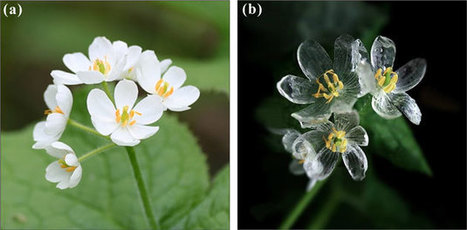

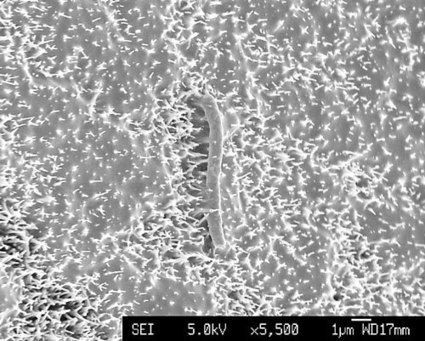





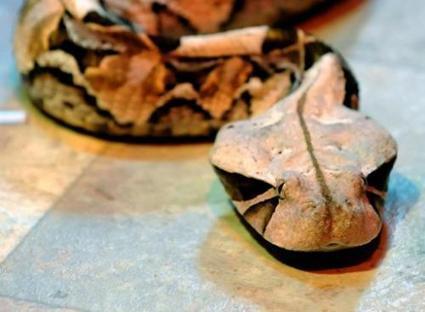
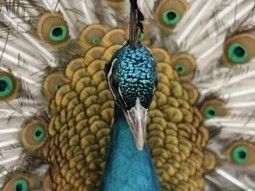

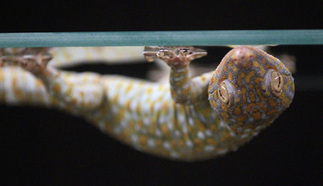









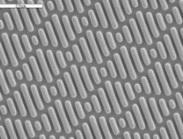
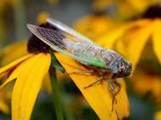


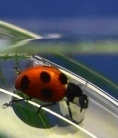





un nouveau verre associant nano structures en cônes et dioxyde de vanadium, pour éviter salissures, éblouissement et échanges thermiques